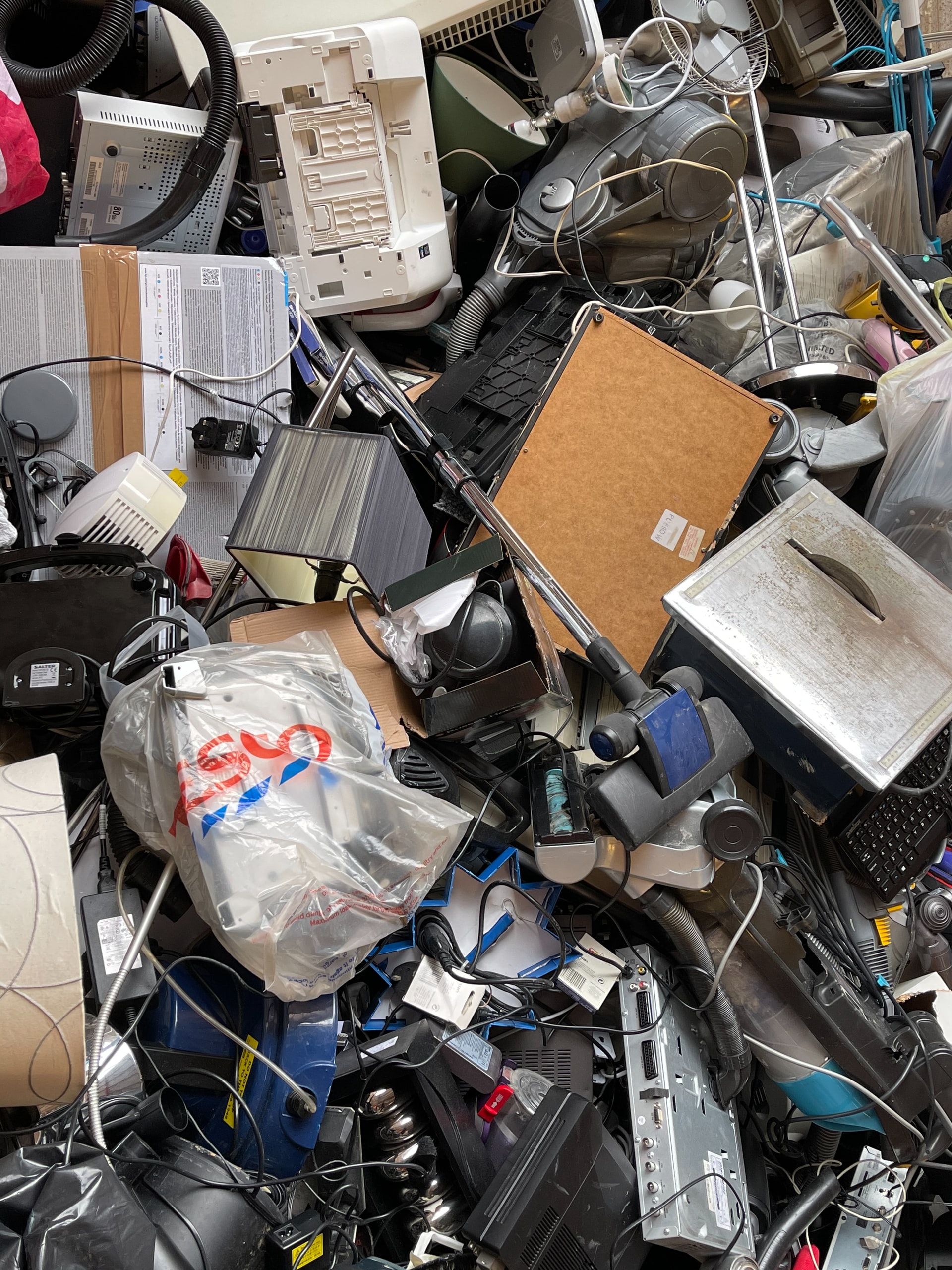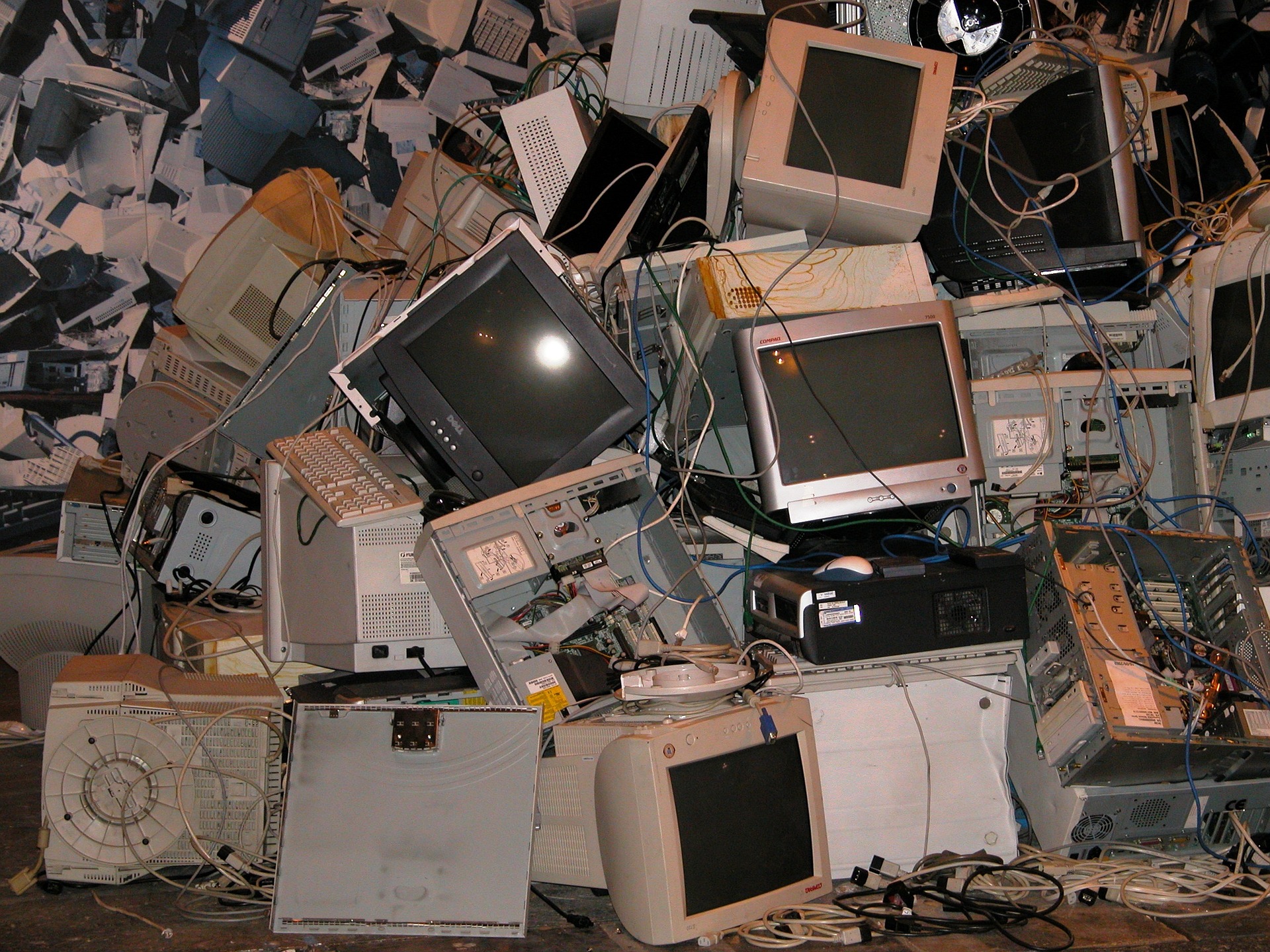Not everything new is good, and not everything old is bad.
About four years ago, I bought a great all-in-one printer. Last year, the red ink started printing with streaks of yellow. I returned twice to the store where I had bought it; twice I was told that the whole unit needed to be replaced and that the old one should go to the dump. All because one colour was compromised? Eventually, my grandson found the self-cleaning button and three cycles later, it’s still working fine.
You may unsubscribe from any of our newsletters at any time.
More on Broadview:
- These Canadians are curbing our food waste problem
- Where to donate your stuff so it actually goes to those who need it
- 15 Canadian-made beauty products for plastic-free giving
The desire to dump over the right to repair isn’t a new phenomenon, at least not in my lifetime.
Back in the ’90s, a newcomer to town moved into a home and found the ceiling fan didn’t work. He installed a new one and asked me to dispose of the old one. Had he spent more time with it as I did, he would have found a broken wire that was easily fixed with a drop of solder. The next year, we built a new house and that same fan went into our bedroom ceiling where it still works now, 30 years later.
My daughter recently sent me a clipping from England, saying that the United Kingdom, following the lead of the European Union, passed legislation mandating manufacturers make spare parts available to shoppers and third-party repair companies. The legislation aims to extend the life cycle of appliances like dishwashers, washing machines, dryers, fridges as well as monitors and televisions by up to 10 years.
In July, U.S. President Joe Biden gave right-to-repair supporters a shot in the arm as part of a sweeping executive order to boost the economy. Part of that included a request to drop “unfair anti-competitive restrictions imposed by powerful manufacturers” that prevent farmers from repairing their own equipment or shoppers taking damaged electronics into a third-party shop for a fix.
A May report from the U.S. Federal Trade Commission found “many consumer products have become harder to fix and maintain” due to a lack of access to special tools, diagnostic software and parts, privy only to manufacturers. Consumers, in the end, are forced to “replace products before the end of their useful lives.”
The closest thing Canadians have is Liberal MP Bryan May’s private member’s bill. May’s bill suggests updating the Copyright Act to outlaw the use of digital locks to block the repairs of devices. This means companies could no longer force shoppers to use their licensed technicians to fix defects. Though, at only its second reading, it’s uncertain when — if at all — the bill will pass and become law.

In addition to costing shoppers money, the lack of a right to repair harms our environment. While there are depots where you can take your used appliances for recycling, many people don’t know that, or are unable to take them there due to pandemic restrictions. As a result, there is an unconscionable amount of e-waste each year that ends up in landfills.
Citing Statistics Canada data, the Brussels-based Bureau of International Recycling reported that Canada produced 638,300 tonnes of “e-scrap” — electronic and electrical equipment — in 2012. Many of these devices contain toxins such as mercury, lead, cadmium, beryllium, and arsenic that can’t be properly disposed of via regular garbage.
All three proposals from the U.K., U.S. and Canada harken back to a simpler time where cities still had small-appliance repair shops. Lamps, toasters, coffee makers, vacuums and fry pans lasted decades longer because of those repair shops. Today’s versions of those shops are often specialized shops in strip malls or kiosks in major shopping centres. Great if you live near one but tough luck if you’re in a rural region.
I’ll say it once again: not everything new is good, and not everything old is bad. The idea that Canadians should have access to fix the goods they buy is not a new concept. And for the sake of our planet, our children’s futures, and our bank accounts, the right to repair is certainly not a bad one.
***
David Gilchrist is a retired minister and former tour company host concerned with how countries handle their pollution. He now lives in Olds, Alta.















Try fixing a new car. What a scam that is.
Also, find someone to fix an Apple or Microsoft problem after the first year warrantee.
We purchased an LG refrigerator, 13 months later it stopped working. $375 later, I replaced the mother board. 2 months after that the fridge died again. Google can be a great tool.
It appears that the fuse is sensitive to surges, not the best idea for coolant and circular fans. A $0.25 “slow-blow” fuse soldered onto the board has lasted 10 years so far. For an extra $10 on the first board (which I kept just in case) I had a fuse holder installed.
Google your make and model with symptoms – odds are someone has a fix for it.
I am so looking forward to being able to bring stuff to shops for repair rather than replacement.
Perhaps a bit off topic, but related. I am a church music director. Remember the day a church bought hymnals, used them until they fell apart (20 years average), and then bought a new release? No more. Today we “discover” that hymn 446 (or whatever) cannot be live-streamed without an expensive copyright/streaming license — and there are a few versions of them out there and not all of them overlapping. And don’t go near the photocopier without protection first. My church was hit for nearly $1,000 a year for all the “Christian” licenses required! Considering that we probably don’t sing more than 300 hymns a year and some of them are repeats, I’m looking for a cheaper solution. But it must be legal!
What is a hymnal?
Sounds like a disease.
(kidding)